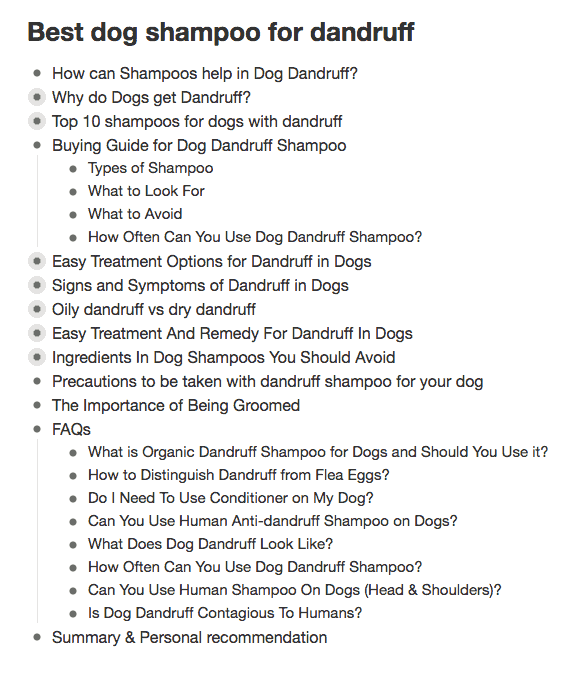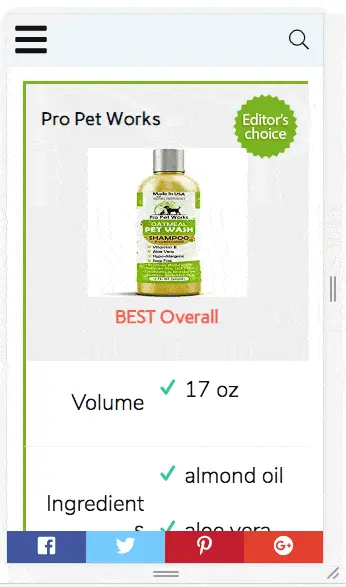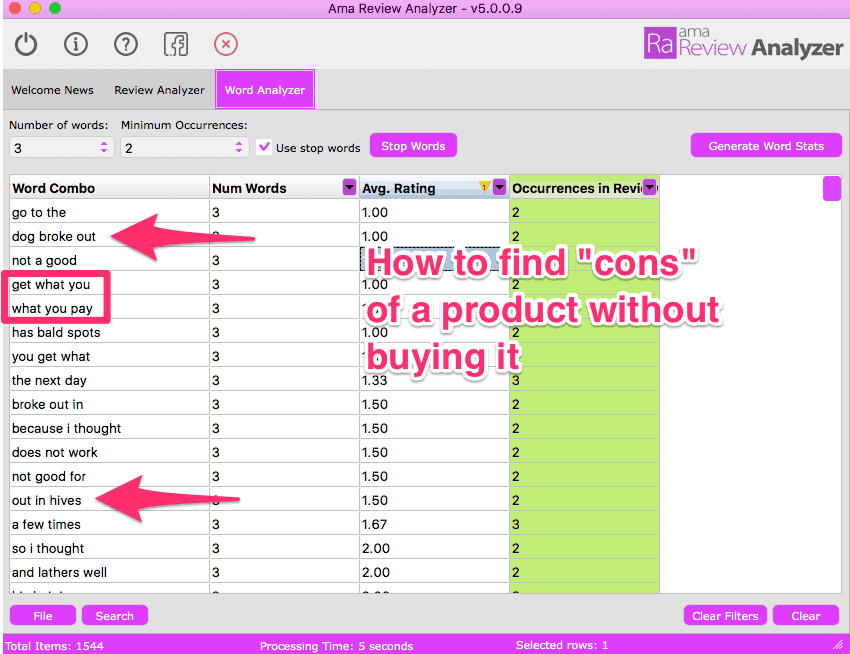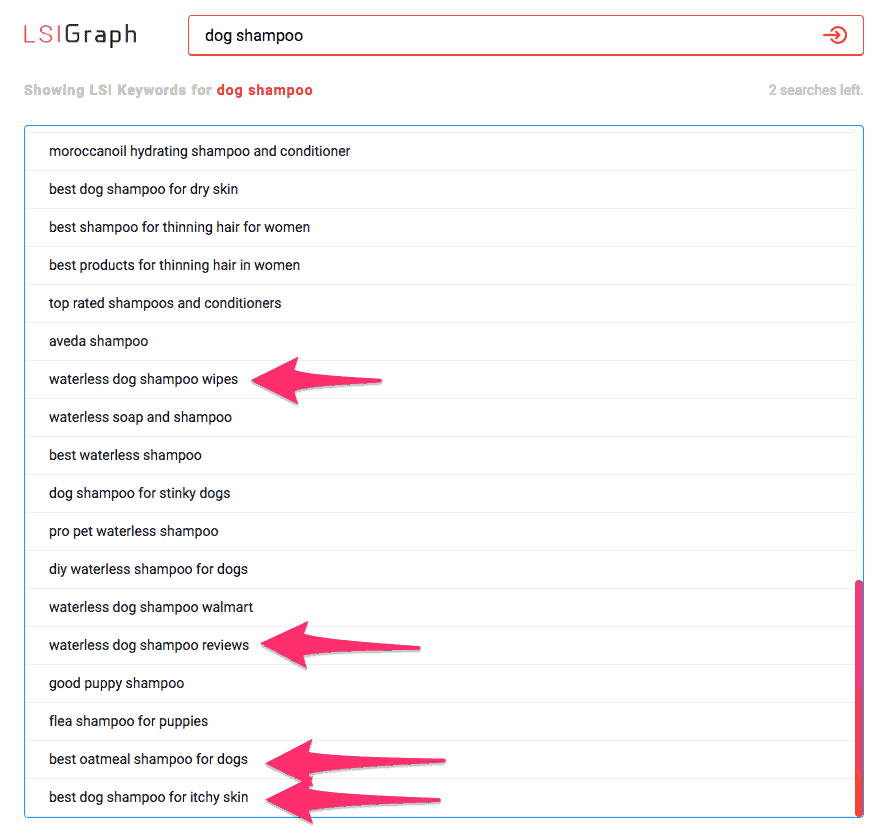It's been long debated what form the perfect Amazon product review should come in.
To be quite frank, each site has their own style of developing and formatting them (or borrowing from others hehe.)
Whatever structure you're considering to write in, you need to make sure that it ranks well in search engines and has the highest conversion rate possible.
Today, I want to go over not only the perfect structure for an affiliate review but also how you can write something that's effective at selling – without actually purchasing the product.Let's get started!
1. Get Your Target Keywords “Topical Relevance”
It's been fairly popular as of late to talk about structuring your content based on “topical relevance.”
But what does this REALLY mean?I think the best way of explaining this would be to run through an exercise of extracting topical relevance while creating an outline for your article.
To do this, we need to run through a bit of manual keyword analysis. I've tried to use specific tools for this but they just don't work as well…
(And yes, it takes a bit of time but it really can be done in 5 mins if you don't get distracted.)
Here's how we extract topical relevance the easiest.
Let's say you're targeting the keyword “best dog shampoo for dandruff”.
It's a bit longer of a keyword but you'll see how powerful this strategy can be:
- Head over to Google.com in an incognito window
- Search for your target keyword, which in our case is “best dog shampoo for dandruff”
- Starting from the top. Open up each result on the first page.
- Open up a blank word document or something like workflowy.com. Something that help you create a bullet point list
- Browse each article and begin formulating topics by bullet points based on the subheaders and little tidbits you pick up along the way. Then start nesting them inside of each other.

I used the word browse because some of us will read every article, while others will only look at the subheaders.
Either case works and of course, the latter requires less effort.
However, if you need to understand your topic in depth. It would makes sense to read each article to get yourself into the mindset of a subject matter expert.
After you've read each top 10 article and you've formulated the bullet point list. You now have something that covers all the topics Google thinks are relevant to searchers and you've got yourself a nice outline to hand your writers or ours.
2. Create Comparison Tables
For the most part, we all should know what a comparison table is and it's likely that many of your competitors are using them as well.
I'm guessing you've seen some that are as small as 5 products to as big as 100.
If you haven't seen a massive comparison table with 100 products, I wouldn't suggest using it. It's way too big and is a waste of time.
It's very overwhelming and takes away from your opportunity to get a click-through to Amazon.It's tough to say how many features you should compare between each product, but don't include more than what's necessary to get the point across.
The colour of the dog's shampoo bottle (from the example above) wouldn't be considered important enough to include.I've found that 4 columns are useful for readers and isn't overwhelming with mobile views.

The columns can contain text or icons that describe the rating of the feature. Things like stars, fractions (3/5), and currency symbols are perfect.
More details on how we come up with these ratings in the next section.Note: Don't use exact prices to describe Amazon products. It's against their associates' agreement and you are better off being a bit vague with this topic. Consider how companies that review restaurants only provide dollar signs to show the range of spending required to dine there.
3. Add Pros and Cons List
Pros and cons could be placed into your table, but I personally like to leave them in a separate section.
For example, you would see the name of the product in the comparison table but right beside it you'd see “more details” and this would be a jump link that scrolls down to the specific product.
This is where the pros and cons table are found. Within each products “more details” area.
How Can We Rate Products Without Purchasing Them?
The best tool I've found for creating pros and cons lists is Amasuite. Utilizing their Review Analyzer, you can quickly see what people like and dislike about any Amazon product.

The Review Analyzer is quite a simple product but the premise is very simple.
It just looks at all the reviews of a product and gives you the ability to search for keywords inside of them, while organizing them based on star rating.
Doing this manually would take quite a long time and Amasuite's review analyzer gets the job done quickly.
4. Insert Keyword Rich Subtitles
It's best practice to include your main keyword at least once in one of your H2 tags (aka subtitles.)
But don't overdo this or you'll over-optimize your content.Over-optimization is a real problem and one way for you to get around this issue is to ask your writers to write naturally.
Without a keyword focus.Then in the editing process, audit the keyword usage like a surgeon and if your main keyword appears more than 3 times – I would go about replacing the rest.If you've been following along and conducting manual keyword research to create your topics (from point number 1), then you should have a good amount of subtitles so you may not have to find any supplementary keywords.
However, you can always checkout LSI Graph to find other keywords that are closely related to your primary and secondary keywords.
It's not perfect, but it can help you find other topics that you didn't think about previously either.

Note: Recently LSI Graph turned into a limited free product, so you can only use it 3 times per day. To save you some time, try to use the LSI for fat head keywords. So instead of “best dog shampoo for dandruff”, we might use “dog shampoo” since we'll find a lot better answers by using this.
5. Utilize Conversion-Driven Copywriting
The last thing I can tell you is what type of voice you should write in. If you really know your niche then it'll be very obvious.
I have a friend in the sports niche and his content is filled with slang for that specific sport. It's awesome.
If you've read through your competitors work and are drawn to a particular style.
Don't be afraid to give your writers a piece of content from them as your voices example.
Just tell them not to link to anything from that domain 😉
Beyond the overall voice, I think it's important to think about who you are targeting with this content.
Who is searching for this particular keyword?
One thing I like to think about is how the writing is targeting different subsets of buyers and use cases.For example, if you have an article on bowling gloves.
You'll want to differentiate between pro bowling gloves and amateurs.
A pro may care about the durability more, while an amateur may care more about how the glove looks and costs.
You're also being considerate of both demographics and letting them pick their own side.For more CRO tips for Amazon affiliates, check out our podcast with conversion expert, Kurt Philips of Convertica.
6. Stay Aligned With Amazon's Operating Agreement
We all need to make sure that somewhere on our sites (usually the footer), we're stating “As an Amazon Associate I earn from qualifying purchases.”If you have a previous disclosure statement, that is also fine, but I'd make sure you stick this new sentence in also just to be safe.Beyond making it clear that you're an Amazon associate, you want to make sure your images and prices are pulled directly from the API.You don't necessarily need prices in an Amazon review, but certainly images are a must-have.
Without them, your content is boring and you just won't be able to compete with the others trying to rank for that keyword. Simply for engagement reasons. #dontbeboringIn our case, we pull Amazon prices and images using AAWP.
7. Think About Mobile Optimization
Google has already announced that their indexing will be a mobile-first one coming soon.
This means that the rankings we need to watch for are our mobile ones.
Previously there were two separate indexes for mobile and desktop, but now, only one exists and it's the geared towards the Google smartphone bot.
It's not incredibly hard to optimize for mobile, but you do need to change up the way you format your content.For example, Duke from one of our podcast episodes has created hundreds of review articles in a very short time and he limits his paragraph length to 1-2 sentences.This isn't your academic style of formatting. You're writing for regular people and Google!Another thing you should think about is creating very scannable blog posts where people can scroll through (using their thumbs) quickly and get to the info they need first, then, decide if they want to read the whole article or not.Your images are also another important factor, make them as small as possible and if you don't need them then don't display them on mobile.
You can do this easily in most page builders like Thrive Architect. (Check our review here)
Leave some images for aesthetics on the desktop, while being very conservative on mobile so the user experience is quicker.
Starting The “Minimum Viable Content”
We often hear about the skyscraper technique being the god of white hat SEO.
Although, I agree with it in many ways, it's not ideal to spend an unhealthy amount of time on one single post.
Get the content out.
See how it performs.
Adjust your course like a pilot. This includes the structure of your reviews too. Keep it organic!


Thanks for sharing this article, It is really helpful.
This is just the content I was looking for. I have been writing articles on my personal blog for a while now and now thinking of starting my first niche blog to write about fishing, which I am very much interested in. I have collected a few formats from various review websites so that I can copy the format. But now thanks to you, I have the perfect idea to make my own conversion-friendly content formating. BTW Kelvin, Is there a particular theme that you can suggest me for my upcoming niche project, please? That would be very helpful.
We use Thrive, elementor is also a great option.
Thanks for writing such an in-depth guideline.We are heavy on review articles and we would definitely use your guidelines. Plus i have also downloaded the guidelines for money site front page article. If possible please write a guideline on how to cover cons of a product in an in-depth manner without making a product look worthless. Would mean a lot.
Hey Kelvin,
Great article. Do you have a recommendation for a tool to use to build the pros/cons tables?
Cheers,
Jay
Superb writing with perfect details good work and topic of product review is also unique.
Kelvin – good tips and tricks in this article… but I would argue that this is NOT the best way to write a ‘product review’. Everything you’ve outlined in this article is a great strategy to write an informational article on a keyword or topic – but there is no chance I would go into that much detail on a specific product review.
The way I see it – a product review is just that… a review of one specific product. If it were me – given your example, I would write several separate review posts for many of the top dog shampoos for dandruff – then, in my main informational articles on ‘best dog shampoo for dandruff’ – I would link to those review posts for readers who want more specific information on the certain products.
It sure appears that you’ve meshed or confused an informational article with a product review. Although – informational articles like this could certainly include a bunch of mini-reviews for products within them. I just wouldn’t call the type of post that you are describing a ‘product review’.
Hey Matthew, I see your point. Adjusted the title to be more clear 🙂 This is about product review roundups, not necessarily a single “product review”.
Hi Kelvin, and thanks for the great article.
I don’t sell anything on Amazon at the moment, but many of these techniques will work for any review. It’s too bad there isn’t something like Amasuite for other products online, lol.
Cheers,
Suzanne
Too bad indeed, Suzanne!